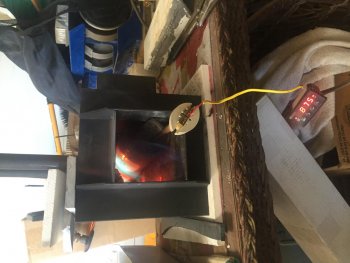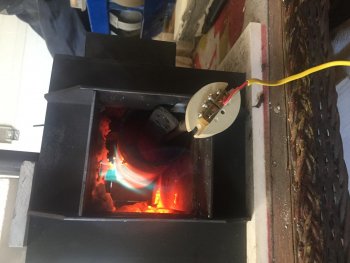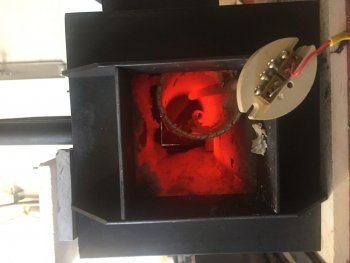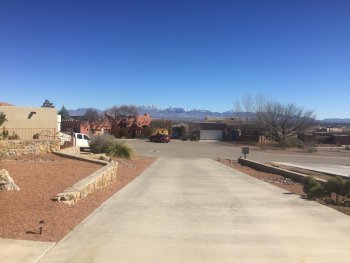wmhammond
Well-Known Member
I need some help. I recently purchased the gas forge pictured below and I have used it successfully to heat treat several smaller knives. A week ago I attempted to heat treat a larger knife. The steel was 1/4" W- and was 13 3/4" long. I ground the blade with a flat grind using 60 grit ceramic blaze by Norton and left an edge thickness (thicker than usual) at 2.5 mm - about the thickness of a Nickle. The blade was coated totally covered with scale prevention coating and then clayed up as pictured below. I use a thermo couple to determine temp inside the forge. I placed the knife as far to the right as I could to keep it out of the gas flame directly and the thermo couple sensor to the right of the blade. I then lit the forge and using the gas flow control I brought the forge slowly up to 1465* which was my target temp. At the time I did this the temperature in my shop was 59* so I assume that my Parks 50 quench Oil was also 59*. When I reached the target temp I soaked the knife for 15 minutes regulating the temp inside the forge between 1470* and 1460*. Pulled it out and immediately and quenched. Allowed it to cool to the point that I could carry it and immediately put it in a 400* oven for 2 hours. Let it cool overnight and then began Grinding it to its final dimensions. Never thought about a crack but low and behold after about three passes on the grinder there it was about 1/2" long with a "J" hook at the top (Pictured below).
OK, so I thought that over and decided that my quench oil was too cold. So, I cut out another knife, same dimensions but this time with 1084 instead of W-2. Same exact procedure on this one as described above except I heated my Parks 50 to 85*. This morning I took it out of the cool oven and cleaned it up with a Brillo pad and there it was, another crack on this new 1084 blank (pictured below). What am I doing wrong? Thanks guys,
Wallace
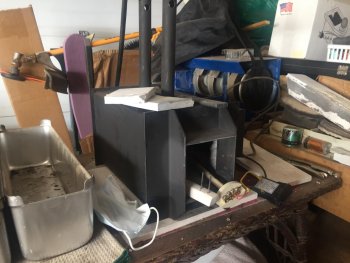
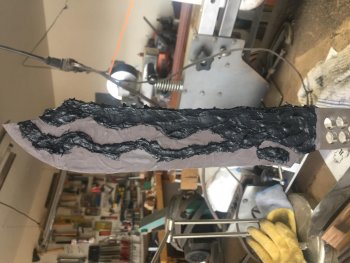
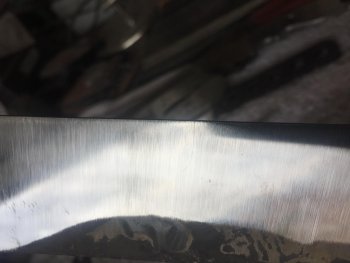
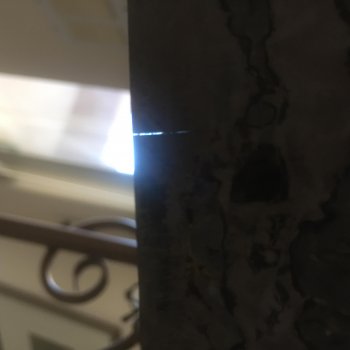
OK, so I thought that over and decided that my quench oil was too cold. So, I cut out another knife, same dimensions but this time with 1084 instead of W-2. Same exact procedure on this one as described above except I heated my Parks 50 to 85*. This morning I took it out of the cool oven and cleaned it up with a Brillo pad and there it was, another crack on this new 1084 blank (pictured below). What am I doing wrong? Thanks guys,
Wallace





